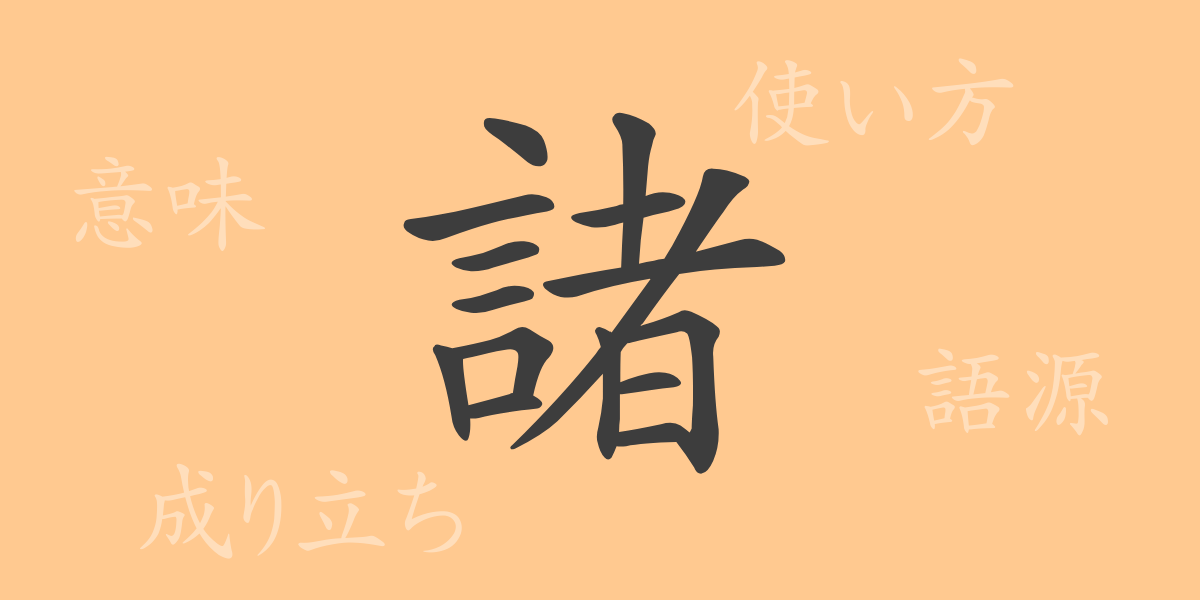The richness of the Japanese language is evident in its use of Kanji, each with its own history and significance. The Kanji ‘諸’ (ショ), frequently used in everyday conversation, literature, and business, is one such character. This article delves into the origins, meanings, and usages of ‘諸’, exploring its readings, stroke count, radical, and its application in various idioms and phrases, offering a deeper understanding of this vital Kanji.
Origins of 諸 (ショ)
The Kanji ‘諸’ originated from ancient China. Initially representing multiple entities bound together, it evolved from a pictograph combining ‘言’ (to speak) and ‘者’ (person). Over time, it has come to denote a variety of general items or concepts, signifying plurality and universality.
Meaning and Usage of 諸 (ショ)
‘諸’ carries meanings like ‘various’ or ‘many’, and is often used as a prefix in terms such as ‘諸問題’ (various problems), indicating a range of issues. It typically precedes adjectives or nouns to denote diversity or extensive scope.
Readings, Stroke Count, and Radical of 諸 (ショ)
Understanding ‘諸’ requires familiarity with its readings, structure, and components:
- Readings: On’yomi ‘ショ’; there are no Kun’yomi readings.
- Stroke Count: ‘諸’ consists of 15 strokes.
- Radical: The radical is ‘言’ (speech).
Idioms, Phrases, and Proverbs Using 諸 (ショ) and Their Meanings
‘諸’ appears in numerous idioms and phrases, reflecting its significance in Japanese language:
- 諸刃の剣 (もろはのつるぎ): A phrase that means a situation has both advantages and disadvantages.
- 諸国漫遊 (しょこくまんゆう): Wandering through various countries.
- 諸説紛々 (しょせつふんぷん): A state where various theories are intermingled.
- 諸事情 (しょじじょう): Various circumstances.
- 諸行無常 (しょぎょうむじょう): A Buddhist term meaning all things in this world are constantly changing.
Conclusion on 諸 (ショ)
The Kanji ‘諸’ enriches Japanese expression both as a word and as a prefix, appearing in a wide range of idioms and phrases. This article aims to deepen understanding of ‘諸’, helping to master more precise and rich expressions in Japanese. By examining ‘諸’, we gain insight into the linguistic and cultural depth that Kanji brings to the Japanese language.

























